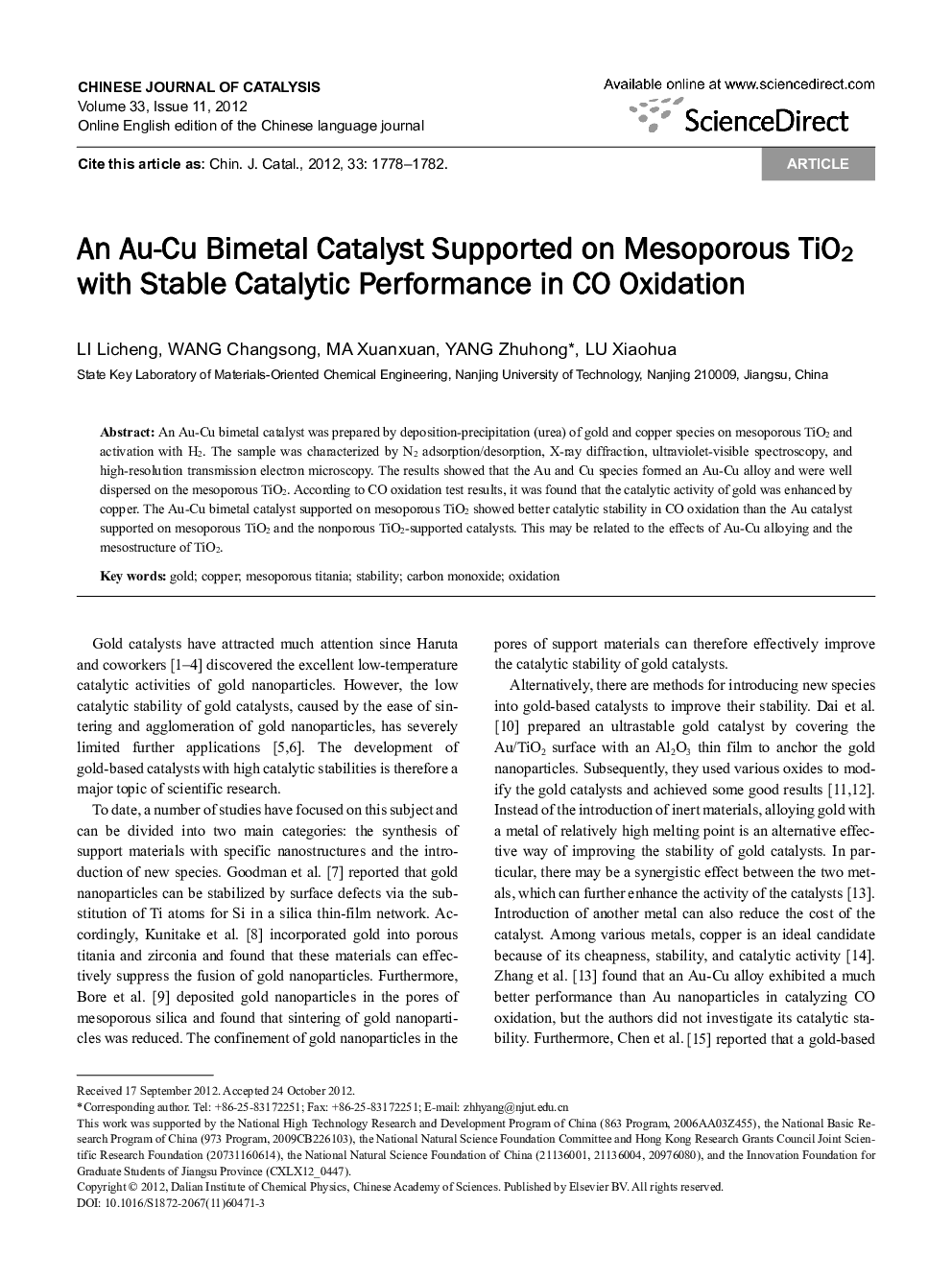| Article ID | Journal | Published Year | Pages | File Type |
|---|---|---|---|---|
| 59203 | Chinese Journal of Catalysis | 2012 | 5 Pages |
An Au-Cu bimetal catalyst was prepared by deposition-precipitation (urea) of gold and copper species on mesoporous TiO2 and activation with H2. The sample was characterized by N2 adsorption/desorption, X-ray diffraction, ultraviolet-visible spectroscopy, and high-resolution transmission electron microscopy. The results showed that the Au and Cu species formed an Au-Cu alloy and were well dispersed on the mesoporous TiO2. According to CO oxidation test results, it was found that the catalytic activity of gold was enhanced by copper. The Au-Cu bimetal catalyst supported on mesoporous TiO2 showed better catalytic stability in CO oxidation than the Au catalyst supported on mesoporous TiO2 and the nonporous TiO2-supported catalysts. This may be related to the effects of Au-Cu alloying and the mesostructure of TiO2.
摘要将金、铜前驱体沉积沉淀到介孔氧化钛材料上, 再经氢气活化后制备了双金属催化剂 Au-Cu/TiO2, 并采用 N2 吸附/脱附、X 射线粉末衍射、紫外-可见光谱和高分辨透射电镜等对样品进行了表征. 结果显示, 金和铜形成合金相, 且良好地分散在介孔氧化钛上. CO 氧化反应结果表明, Cu 可以提高 Au 催化剂的催化性能, Au-Cu/TiO2 催化剂比 Au/TiO2 和无孔氧化钛负载的 Au 催化剂具有更好的 CO 催化氧化稳定性. 这可能与 Au, Cu 合金化和氧化钛的介孔结构有关.
Graphical abstractThe catalytic stability of a gold-based catalyst can be significantly improved by the effects of both Au-Cu alloying and the mesostructure of TiO2.Figure optionsDownload full-size imageDownload as PowerPoint slide
